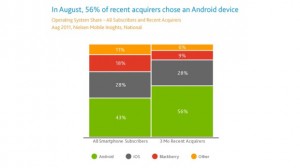The Financial Post announced announced McDonald’s is planning to spending 1 billion dollars on renovating 1400 Canadian restaurants. Renovations include double drive-thru lanes, wifi, fire places, flat-screen televisions and revamping the inside with stone accents, all this to “modernize the chain” and help the company compete with Canadian fast-food chain Tim Horton’s.
This is surprising as a majority of the McDonald’s in Canada just went through renovations two years ago, with upgrades identical to the ones listed above. When McDonald’s became and official sponsor of the 2010 Winter Olympics held in Vancouver McDonald’s across the country were transformed into bright, trendy restaurants.

http://pajamasmedia.com/instapundit/files/2008/12/comfychairpulaski.jpg
Although this is an expensive endeavour considering most McDonald’s have been recently updated a move in a cleaner, more modern appearance is the way to go. McDonald’s took a hit about 7 years ago, after the documentary SuperSize me came out. McDonald’s went through many criticisms about the ingredients and lack of nutritional value in their menu as well as the cleanliness and process of preparing and storing food. Since then McDonald’s has made a number of changes for the better. This more modern, upscale look will keep McDonald’s moving in a positive direction and maintain their popularity among consumers.


 The media keeps telling us the BlackBerry is going under, but as a Sauder student it’s harder to believe. Since moving to UBC this fall my BBM contacts have doubled. BlackBerry’s seem to dominate Sauderite’s preferences. Is it because of BlackBerry’s reputation as the classic “business phone” and we’re all trying to play the part? Or are we all just waiting for the iPhone 5 or mobile contracts to end?
The media keeps telling us the BlackBerry is going under, but as a Sauder student it’s harder to believe. Since moving to UBC this fall my BBM contacts have doubled. BlackBerry’s seem to dominate Sauderite’s preferences. Is it because of BlackBerry’s reputation as the classic “business phone” and we’re all trying to play the part? Or are we all just waiting for the iPhone 5 or mobile contracts to end?